Happy new year! I’ve made a resolution to post at least three times a month, even if each post is just a photo or a thought. Let’s see how long this lasts!
A while back, one of the undergrads told us that the nearby Nanning Zoo keeps a Chinese white dolphin. We had some concerns and suspicions about the dolphin: that it was being kept in poor conditions; that it had been purchased on the black market in Thailand; that it wasn’t a Chinese white dolphin at all. We finally had the chance to take a look for ourselves.
The zoo’s management welcomed us warmly, and what we saw put most of our concerns to rest.
First, this dolphin clearly is a Chinese white dolphin. Its size, shape and coloration are all consistent with the representative populations that live along the southern Chinese coast.
The dolphin seemed to be well cared for and healthy. Check out those pearly whites! The trainer interacted well with the dolphin and they appeared to be on friendly terms. Later, we had lunch with the trainer and his boss, one of the zoo’s managers, and both appeared to be conscientious, kind people.
We asked the manager and the trainer individually how the dolphin came to their zoo, and they gave consistent, detailed descriptions about how it had been found beached near Beihai (北海,a nearby coastal city), kept for a few days by one of the marine agencies, and finally transported to their zoo. At first, the dolphin had been underweight and difficult to manage, but it regained its health and slowly became accustomed to captivity. Now, several years later, it had become so well-behaved that it starred in its own acrobatics show.
Not everyone was as impressed as I was:
I don’t claim to be a dolphin whisperer, but it seemed cheerful to me – check out the double chin!
Although it was a relief to learn that our worst fears were unfounded, the visit put me in a pensive mood. I have mixed feelings about zoos in general, and even more misgivings about using animals for entertainment. Thinking back to the countless hours of amazement that zoos have provided to me since childhood, I appreciate their educational value, but no matter what, I think it is morally questionable to keep wild animals in captivity.
I suppose that if we design zoos as scientifically and humanely as possible to optimize the animals’ standard of living, the educational value may outweigh the wrong done to the animals. Above all, zoos must promote the message that our number one priority is to protect wilderness areas and maximize the chances that wild populations will survive in their natural habitats, and avoid implying that zoos can serve as Noah’s Arks for the world’s biodiversity.
Sourcing of zoo animals is also a dilemma. Capturing wild animals is clearly problematic. Captive breeding results in inbreeding and also creates an underclass of animals who are completely dependent on humans for survival. The only acceptable source of animals might be rescuing sick and injured animals from the wild, but even those should be returned to the wild once they are healed, leaving very few available for zoos and aquariums.
More problematic is the use of animals for entertainment. If we generally agree that circus animals are anachronisms in the 21st century, how does Blackstone expect to raise $500 million in SeaWorld’s IPO? Before you invest, be sure to read up a bit on SeaWorld’s business.
Click here, here, here, here, and here for some visual evidence of the risks associated with SeaWorld.
I’ll conclude on a lighter note. What do you remember about dolphins from junior high life science class? If your teacher was anything like mine, you may recall that dolphins are one of the few animals other than humans that have sex for fun. Dolphin orgies, foreplay, homosexual behavior, and even interspecific advances are all well-documented. Dolphins are such sexual creatures, our teacher told us, that dolphin trainers often masturbate captive dolphins to keep them in good spirits.
You can guess where this led. One of our classmates had always wanted to study marine mammals, and that day in seventh grade life science class we finally found out why.  Though she didn’t ultimately pursue that career, we tease her to this day.
Imagine my excitement when someone asked the Nanning Zoo dolphin trainer how he knew that the dolphin was a male. Were my teacher’s words to become reality before my very eyes?
…I guess he just wasn’t in the mood that day.
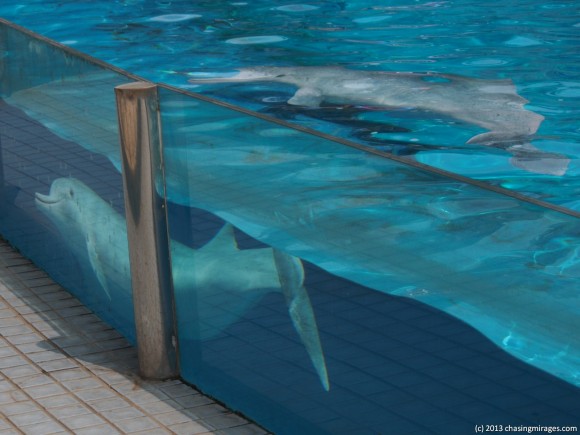
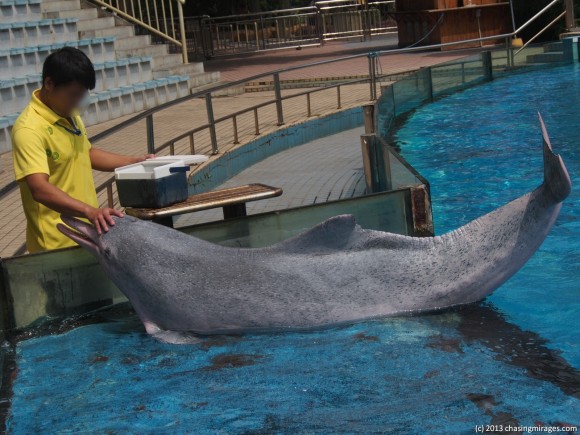
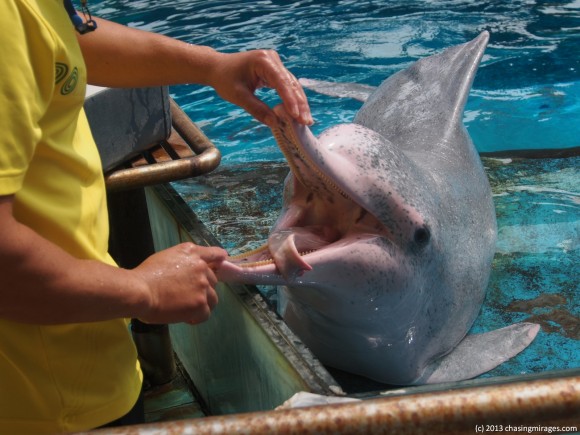
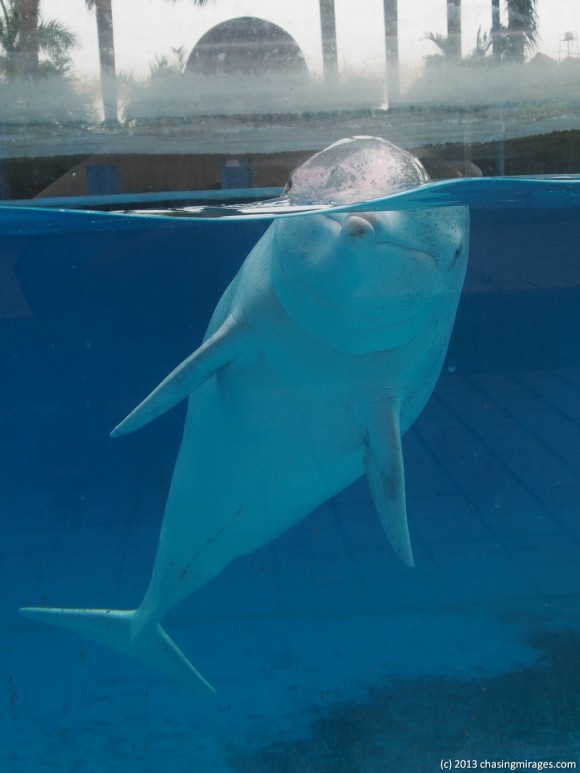

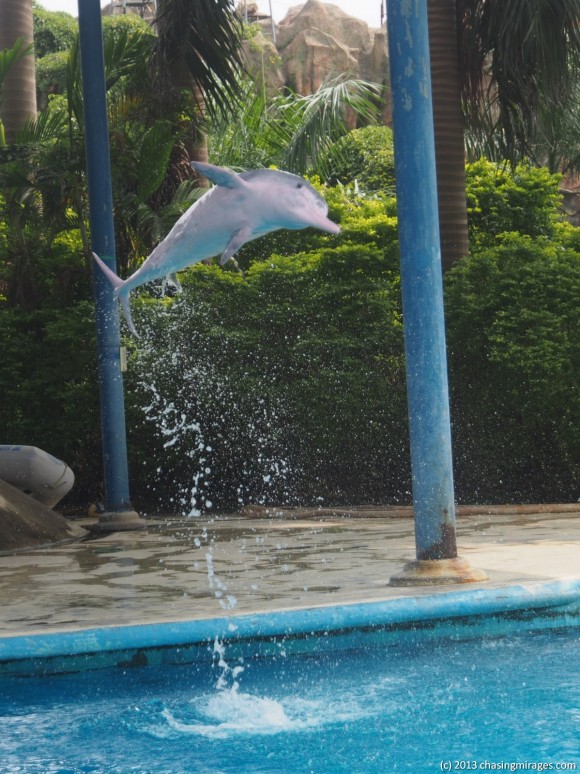


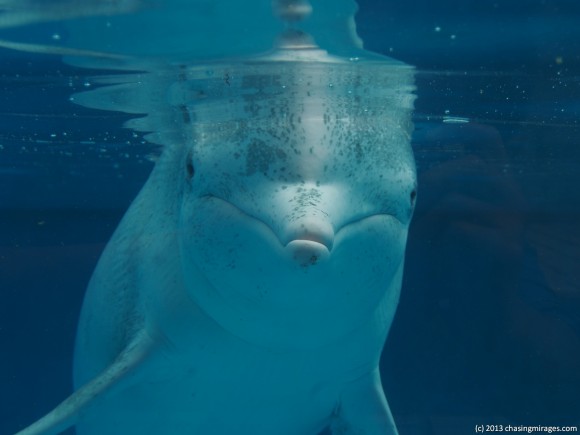
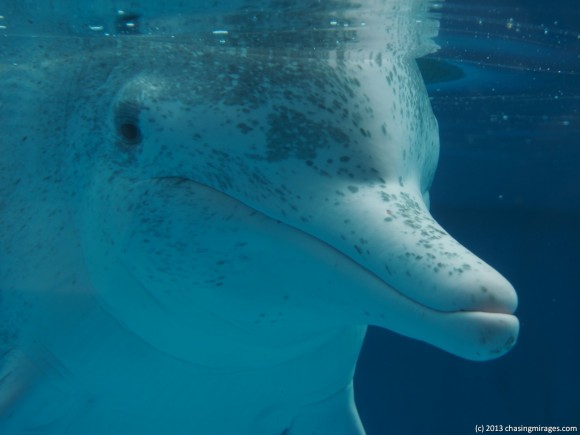


Leave a Reply